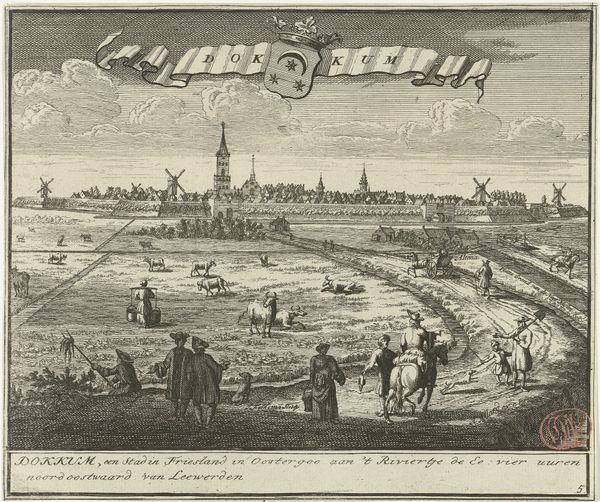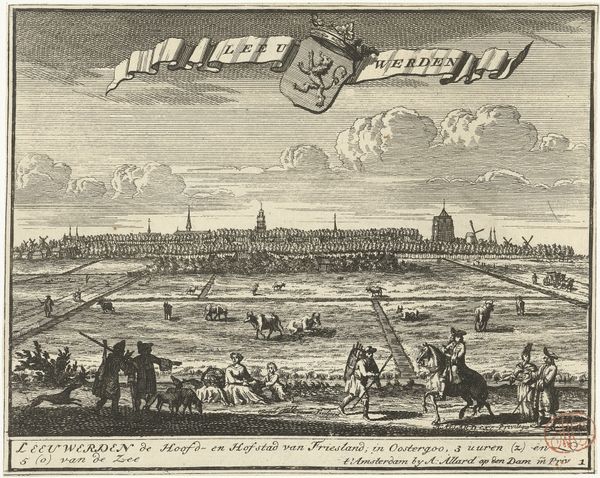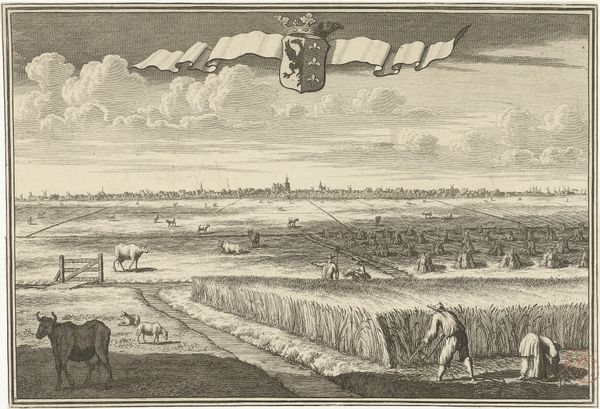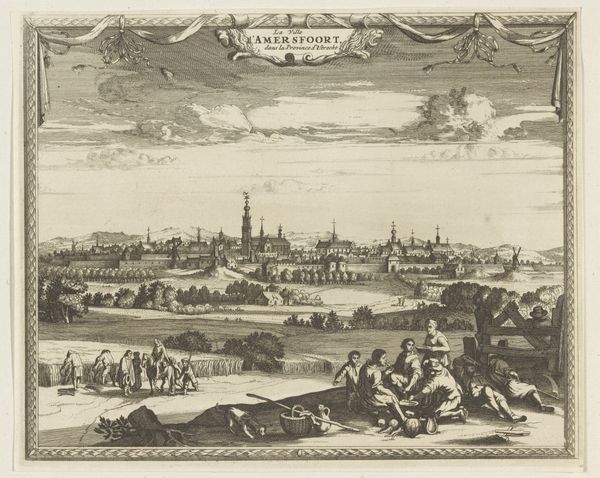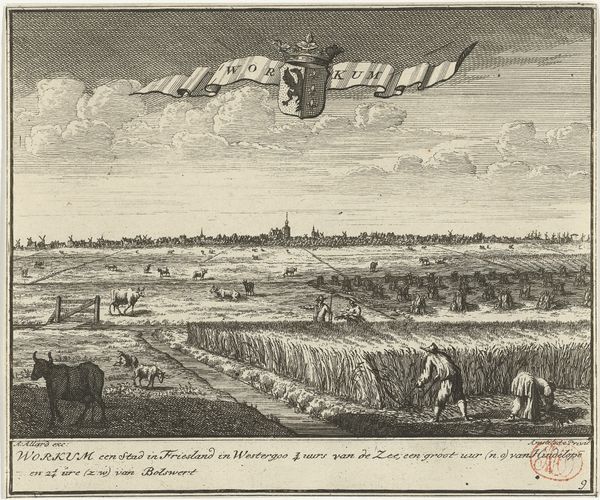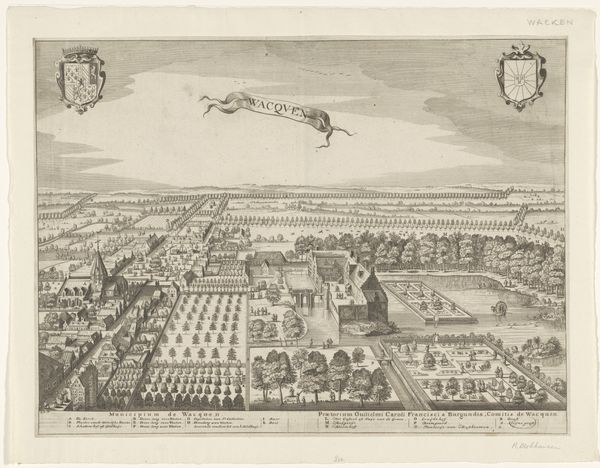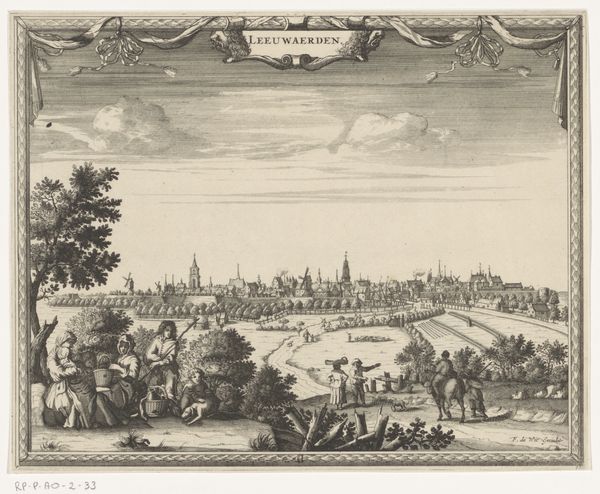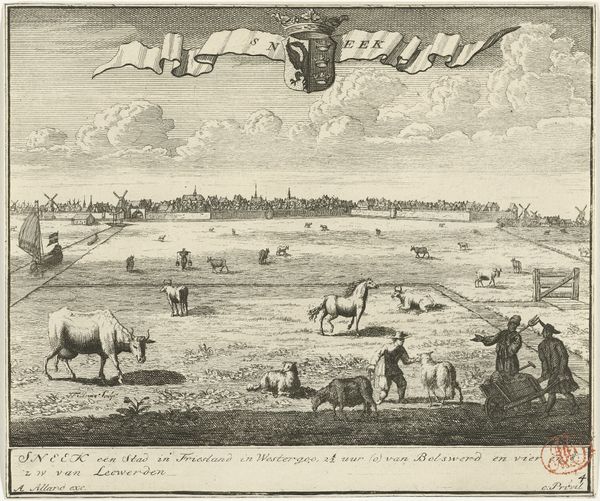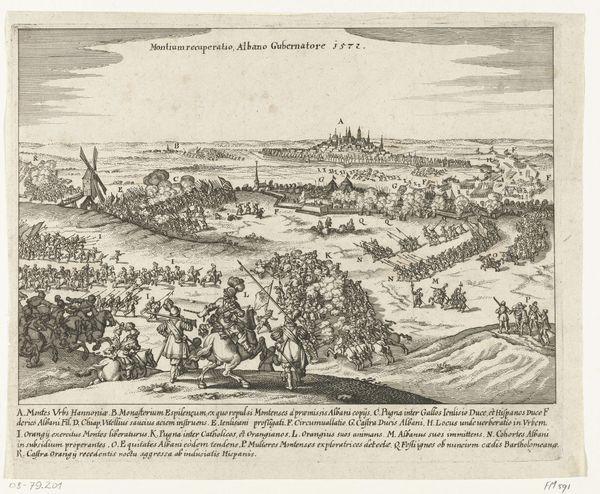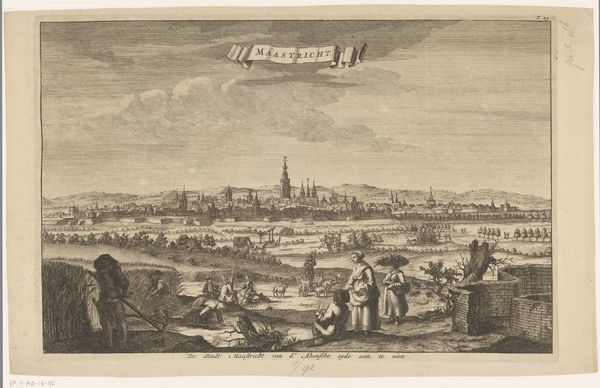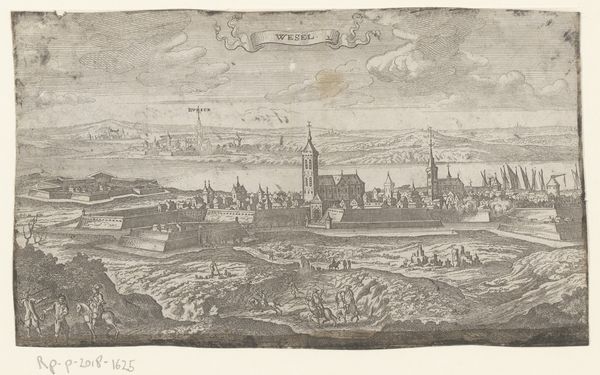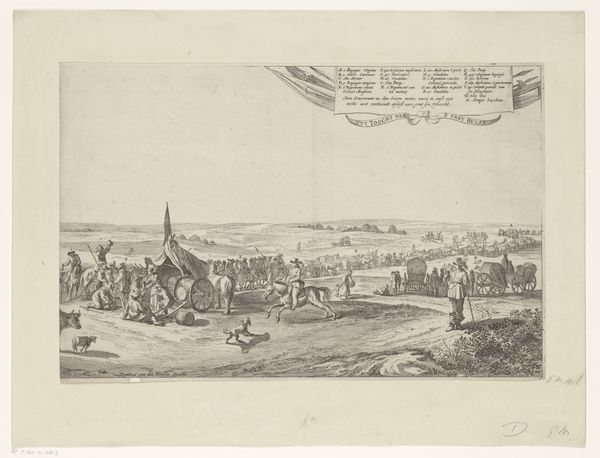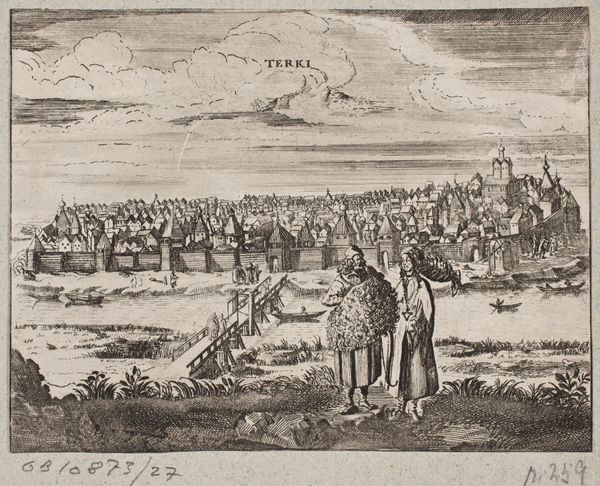
print, engraving
#
baroque
#
pen drawing
# print
#
landscape
#
cityscape
#
engraving
Dimensions: height 154 mm, width 192 mm
Copyright: Rijks Museum: Open Domain
Curator: We’re looking at “Gezicht op Harlingen,” or "View of Harlingen," an engraving likely made between 1702 and 1725, now held at the Rijksmuseum. Editor: My first thought is that it feels both incredibly detailed and a little detached. Like a cartographer’s precise observation rather than a personal impression. Curator: That's a perceptive reading. Prints like this, especially townscapes, served a specific purpose. They weren't just aesthetic objects; they were visual documents, tools for civic identity and even instruments of power. Think about how a ruler might use images like this to showcase the extent and order of their domain. Editor: I see what you mean. The almost diagrammatic quality—the neat rows of houses, the stylized cows in the foreground—everything seems placed to convey order and prosperity. It’s interesting how the rural and urban are juxtaposed, hinting at the town's connection to the land and sea. Are there any particular stories attached to this town, anything in its history? Curator: Absolutely. Harlingen was an important port city in Friesland, with a strategic position for trade. These views were often commissioned to promote the city, attracting merchants and investment. The coat of arms, prominently displayed above the town, is further demonstration of civic pride. The artist, Jacob Folkema, likely catered to a very specific, well-to-do audience. Editor: Right, so the engraving becomes part of the town’s branding. It makes me consider who is missing from this "View." We see prosperous burghers in the foreground, but where are the working class people? And while it celebrates Harlingen’s connection to the sea, how does it obscure the realities of maritime labor? What about the environmental impact of port activity? It seems that what is *not* shown is as important as what *is*. Curator: That's a vital question, one that many art historians have considered. We need to look critically at what these images choose to highlight and what they conveniently ignore. It gives you an insight not just to that specific artist but of what was the dominant narrative of that specific moment. Editor: Absolutely. By engaging with these absences, we can encourage critical thinking about the dominant narratives surrounding art, space and how we view history. Curator: Thank you for enriching our reading of Jacob Folkema’s “View of Harlingen.” I hope our listeners consider all points we mentioned. Editor: Agreed, viewing art as a social text enables critical insights of this period in history.
Comments
No comments
Be the first to comment and join the conversation on the ultimate creative platform.

